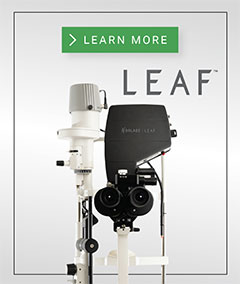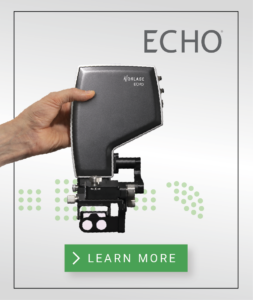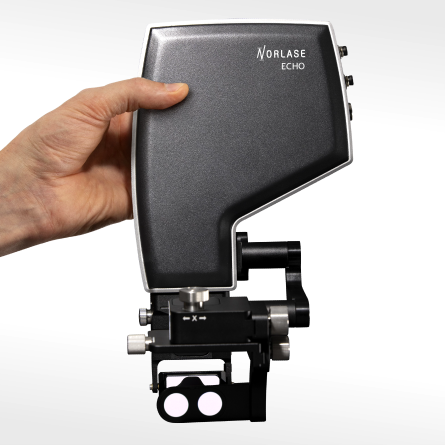Glaucoma: What it is, how it’s diagnosed, and the role of laser in treatment
What Is Glaucoma?
Glaucoma occurs when conditions in a human eye cause damage to its optic nerve, leading to visual abnormalities.
Glaucoma is a serious medical condition, since lost vision cannot be recovered. Additionally, many types of glaucoma give no warning signs, meaning that by the time a patient notices visual changes, the disease has reached an advanced stage. It is one of the leading causes of blindness for people over the age of 60, affecting over 3 million Americans and 80 million people worldwide.
Fortunately, routine eye doctor visits can greatly improve a patient’s chance of catching and managing the disease early, slowing or preventing adverse changes through lifelong treatment. Modern advances in diagnostic and treatment technology, including laser treatment for glaucoma, have given eye doctors a wide range of tools for effectively managing the disease at different stages of progression.
Here, we’ll review the basics of glaucoma, including its causes, symptoms, diagnostic process, and prevention and treatment strategies.
Causes
Abnormally high pressure in the eye is frequently cited as a primary cause of glaucoma. In reality, it is simply the largest risk factor, as glaucoma can be diagnosed with normal or even lower than normal eye pressure. However, many people with glaucoma have high eye pressure. Additionally, lowering pressure usually helps slow disease progression. Therefore, even though high pressure doesn’t technically cause glaucoma, it gives doctors an important indicator for disease diagnosis and management.
Glaucoma tends to run in families, and specific genes have been identified that seem to be associated with increased risk of disease manifestation.
Symptoms
There are two primary types of glaucoma: open-angle glaucoma and acute angle-closure glaucoma (also called “closed-angle” or “narrow-angle” glaucoma). Although there are other distinct forms, including glaucoma that sometimes presents secondary to other medical conditions, these represent the most common types.
Open-angle is the most common, affecting approximately 95% of patients. It initially has no symptoms. Eventually, peripheral vision (vision “off to the side”) is lost. Without treatment, an individual can become totally blind.
Acute angle-closure glaucoma occurs when the normal flow of certain fluids within the eye is disrupted, causing damage to the optic nerve or other parts of the eye. Symptoms tend to be more immediate and pronounced. Acute angle-closure glaucoma is a medical emergency, with blindness sometimes occurring within one or two days.
According to Mayo Clinic, specific symptoms associated with each type include:
Open-angle glaucoma
- Patchy blind spots in your side (peripheral) or central vision, frequently in both eyes
- Tunnel vision in the advanced stages
Acute angle-closure glaucoma
- Severe headache
- Eye pain
- Nausea and vomiting
- Blurred vision
- Halos around lights
- Eye redness
How Glaucoma is Diagnosed
Patients with above-average ocular pressure, as well as patients with an unusual optic nerve appearance, have a higher risk of eventually developing glaucoma and are good candidates for diagnostic analysis.
Eye doctors use several tests to confirm the presence of glaucoma, including tests that assess a patient’s visual acuity, eye fluid pressure, and more.. Individuals at high risk for glaucoma should make routine eye care check-ups a priority.
Prevention
Although there is no “cure” for glaucoma – and similarly, no way to achieve absolute prevention – patients should be aware of key risk factors and protect the eye from physical trauma. Get regular eye examinations, understand your family history and genetic risk factors, and always wear eye protection during physical activity. Additionally, if you have been prescribed eye drops by your doctor, it is crucial that you continue to take them as directed.
Treatment
There are several ways to treat glaucoma. Medication, consisting primarily of eye drops that work to lower pressure in the eye, is usually considered the first line of treatment. When medication alone can’t lower pressure enough, laser treatment or surgery can be used for glaucoma management.
Laser treatments for glaucoma are usually done in the eye doctor’s office or an outpatient surgery center. Laser treatments consist of trabeculoplasty, which is used to treat people with open-angle glaucoma, and iridotomy, which is used to treat people with angle-closure glaucoma.
Norlase green laser devices, which include Laser Photocoagulation Equipment and Laser Indirect Ophthalmoscope, are designed to make laser treatment for glaucoma as efficient and portable as possible. Our ultra-compact, world-class laser devices make treatment available in almost any exam room.
Next Steps
If you want to learn more about glaucoma, consult an eye doctor, who can help you take appropriate preventive measures, including setting up routine eye exams with appropriate diagnostic check-ups. Visit Norlase to learn more about our products. Explore other interesting topics in our blog.
References
-
Glaucoma: What it is, how it’s diagnosed, and the role of laser in treatment
What Is Glaucoma?
Glaucoma occurs when conditions in a human eye cause damage to its optic nerve, leading to visual abnormalities.
Glaucoma is a serious medical condition, since lost vision cannot be recovered. Additionally, many types of glaucoma give no warning signs, meaning that by the time a patient notices visual changes, the disease has reached an advanced stage. It is one of the leading causes of blindness for people over the age of 60, affecting over 3 million Americans and 80 million people worldwide.
Fortunately, routine eye doctor visits can greatly improve a patient’s chance of catching and managing the disease early, slowing or preventing adverse changes through lifelong treatment. Modern advances in diagnostic and treatment technology, including laser treatment for glaucoma, have given eye doctors a wide range of tools for effectively managing the disease at different stages of progression.
Here, we’ll review the basics of glaucoma, including its causes, symptoms, diagnostic process, and prevention and treatment strategies.
Causes
Abnormally high pressure in the eye is frequently cited as a primary cause of glaucoma. In reality, it is simply the largest risk factor, as glaucoma can be diagnosed with normal or even lower than normal eye pressure. However, many people with glaucoma have high eye pressure. Additionally, lowering pressure usually helps slow disease progression. Therefore, even though high pressure doesn’t technically cause glaucoma, it gives doctors an important indicator for disease diagnosis and management.
Glaucoma tends to run in families, and specific genes have been identified that seem to be associated with increased risk of disease manifestation.
Symptoms
There are two primary types of glaucoma: open-angle glaucoma and acute angle-closure glaucoma (also called “closed-angle” or “narrow-angle” glaucoma). Although there are other distinct forms, including glaucoma that sometimes presents secondary to other medical conditions, these represent the most common types.
Open-angle is the most common, affecting approximately 95% of patients. It initially has no symptoms. Eventually, peripheral vision (vision “off to the side”) is lost. Without treatment, an individual can become totally blind.
Acute angle-closure glaucoma occurs when the normal flow of certain fluids within the eye is disrupted, causing damage to the optic nerve or other parts of the eye. Symptoms tend to be more immediate and pronounced. Acute angle-closure glaucoma is a medical emergency, with blindness sometimes occurring within one or two days.
According to Mayo Clinic, specific symptoms associated with each type include:
Open-angle glaucoma
- Patchy blind spots in your side (peripheral) or central vision, frequently in both eyes
- Tunnel vision in the advanced stages
Acute angle-closure glaucoma
- Severe headache
- Eye pain
- Nausea and vomiting
- Blurred vision
- Halos around lights
- Eye redness
How Glaucoma is Diagnosed
Patients with above-average ocular pressure, as well as patients with an unusual optic nerve appearance, have a higher risk of eventually developing glaucoma and are good candidates for diagnostic analysis.
Eye doctors use several tests to confirm the presence of glaucoma, including tests that assess a patient’s visual acuity, eye fluid pressure, and more.. Individuals at high risk for glaucoma should make routine eye care check-ups a priority.
Prevention
Although there is no “cure” for glaucoma – and similarly, no way to achieve absolute prevention – patients should be aware of key risk factors and protect the eye from physical trauma. Get regular eye examinations, understand your family history and genetic risk factors, and always wear eye protection during physical activity. Additionally, if you have been prescribed eye drops by your doctor, it is crucial that you continue to take them as directed.
Treatment
There are several ways to treat glaucoma. Medication, consisting primarily of eye drops that work to lower pressure in the eye, is usually considered the first line of treatment. When medication alone can’t lower pressure enough, laser treatment or surgery can be used for glaucoma management.
Laser treatments for glaucoma are usually done in the eye doctor’s office or an outpatient surgery center. Laser treatments consist of trabeculoplasty, which is used to treat people with open-angle glaucoma, and iridotomy, which is used to treat people with angle-closure glaucoma.
Norlase green laser devices, which include Laser Photocoagulation Equipment and Laser Indirect Ophthalmoscope, are designed to make laser treatment for glaucoma as efficient and portable as possible. Our ultra-compact, world-class laser devices make treatment available in almost any exam room.
Next Steps
If you want to learn more about glaucoma, consult an eye doctor, who can help you take appropriate preventive measures, including setting up routine eye exams with appropriate diagnostic check-ups. Visit Norlase to learn more about our products. Explore other interesting topics in our blog.
References

DIDN’T FIND WHAT YOU’RE LOOKING FOR?
Let us know how we can help!
DIDN’T FIND WHAT YOU
WERE LOOKING FOR?
Let us know how we can help!





